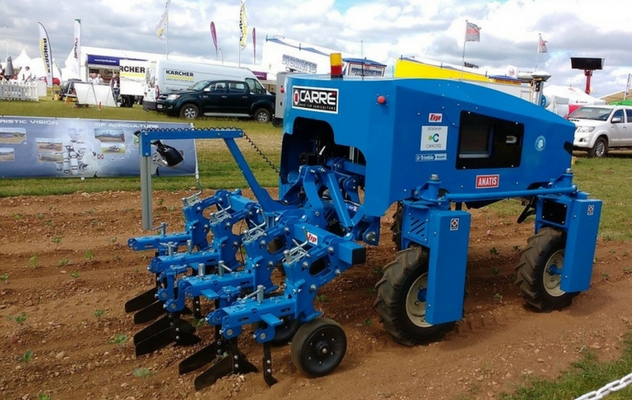
Farming is becoming increasingly competitive. With a growing population, changing climates and labour shortages predicted, who will farmers turn to to help harvest their crops?
Robots and drones could be the answer and may play a part in revolutionising the farming industry.
A recent CPD activity gave teachers an insight into the future of farming and emerging agri-tech. Hosted by the CEO of the Institution of Agricultural Engineers, Alistair Taylor, Cereals 2017 showed the types of new technology that is being developed for ‘precision farming’.
What does the future of farming look like?
Tractors with GPS and drones that carry lasers which are capable of detecting and destroying weeds could soon be a normal part of the farming industry.
Harper Adams University in Shropshire is currently working on a hands-free hectare – growing a crop of spring barley without setting foot in the field! An autonomous tractor is equipped with laser scanners monitoring the front; whilst a precision drill and sprayer system are attached to the back.
The tractor is able to navigate the hectare using an autopilot system for drones, which allows it to follow a pre-determined path. Running entirely on GPS, the tractor follows the requested route and makes its way between waypoints. The waypoints are digital GPS markers created using software that has been positioned at the ends of the field for the tractor to navigate to; like an advanced version of a dot-to-dot.
"Currently, the average age of a UK farmer is 60. To be able to effectively implement precision farming, more needs to be done to attract young people into the sector."
A French company, Carré, has recently launched an autonomous robotic weeder and data gathering robot. This works independently and can hoe between rows of crops. It supports farmers’ decision making by monitoring crop density, light levels, soil moisture content and air and soil temperature. The data this robot collects can then be downloaded to a PC, tablet or smartphone.
Farmers are also turning to drones as a more efficient way of viewing large crop areas to identify weeds and crop stress levels, estimate yields and potentially administer sprays.
How can we communicate the opportunities on offer to young people?
Currently, the average age of a UK farmer is 60. To be able to effectively implement precision farming, more needs to be done to attract young people into the sector.
STEM Learning is working with the Institution of Agricultural Engineers to encourage as many agri-tech companies to allow their employees to volunteer as STEM Ambassadors. This programme encourages people working in STEM-related fields to share their experiences and career motivations with young people.
The STEM Insight programme enables teachers to experience STEM-related work in industrial or university settings, including precision farming. These placements equip teachers to bring careers to life in the classroom, helping to inspire students and enrich their teaching.
Find out more
- STEM Ambassadors programme
- STEM Insight
- Cereals 2018
- Hands-free hectare
- The Institution of Agricultural Engineers

